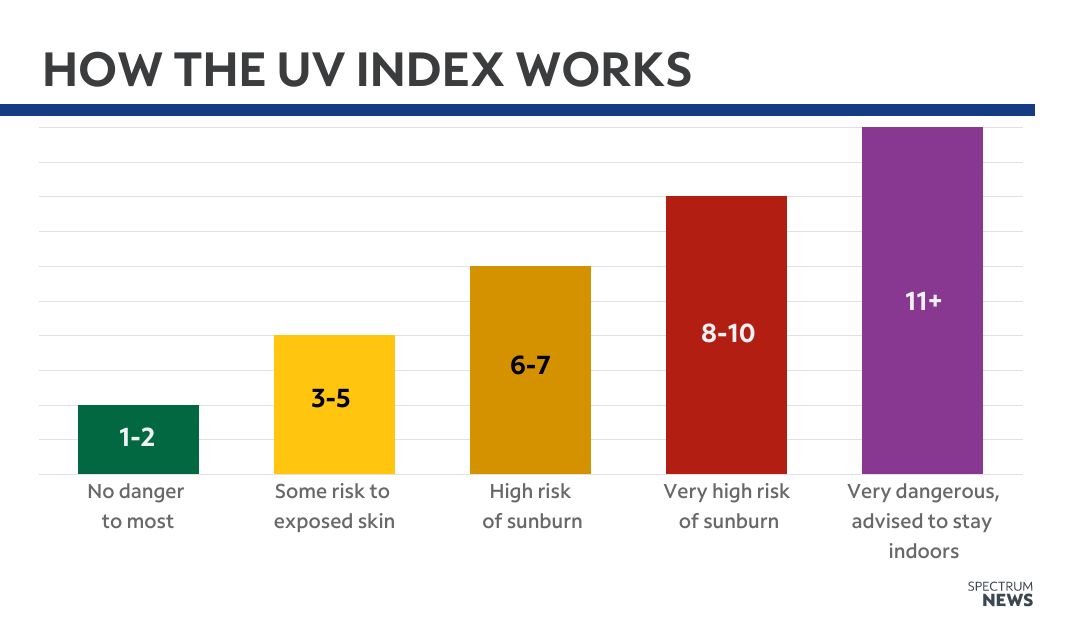We don’t have a chill in the air just yet. But with shorter, cooler days ahead, many (myself included) become lax on their sunscreen routine.
It turns out that not wearing sunscreen in the fall and winter could be very harmful to our skin.
The end of the summer weather is near, but that doesn’t mean you should put away your sunscreen. Although temperatures are cooler, UV rays still will affect you. That’s because the temperature is not directly correlated to the UV index.
The UV index is the level of the ultraviolet radiation levels on a 1 to 11+ scale.
The UV index provides a daily forecast of the expected intensity of UV radiation from the sun. This number can vary depending on a few factors. They include current weather, altitude, time of year, time of day and ozone.
You’ve probably heard of the ozone layer, but if you’re unsure of what it does, it essentially protects us from a lot of the sun’s harmful rays. In different areas around the world, it can be thick or thin depending on your latitude, longitude and weather patterns.
The time of day is another important thing to keep in mind when deciding about sunscreen usage.
The sun is at its highest in the sky around noon, which means the sun’s rays have the shortest distance to travel, making the UV index the highest during that time. In the early morning and late afternoon, the sun’s rays travel a greater distance through the atmosphere, bringing the UV index down.
Your altitude also plays a role in the UV index. In higher altitude areas, the UV index will be higher because there is less atmosphere for sunlight to travel through.
Cloud cover reduces UV levels, but not completely. Depending on the thickness of the cloud cover, it is still possible to burn on a cloudy day. This has happened to me many times. Out on my family’s boat in the spring or fall is usually when I suffer from sunburn the most! That’s because I’m not as careful. Even if it does not feel warm, you still should be on guard.
Just like with temperature, the sun’s angle varies with the change of seasons. UV intensity is almost always the highest during the summer months and lowest during the winter. But as I stated before, just because it is fall or winter doesn’t mean you can’t get burned.
It may seem silly to lather up in sunscreen as you’re getting ready to go apple picking, but it is just as important to do so as it is in the summer. Keeping your skin protected can keep you looking young longer, but more importantly, protect you from the many types of skin cancer.
Check the UV index where you live here.
Our team of meteorologists dives deep into the science of weather and breaks down timely weather data and information. To view more weather and climate stories, check out our weather blogs section.

